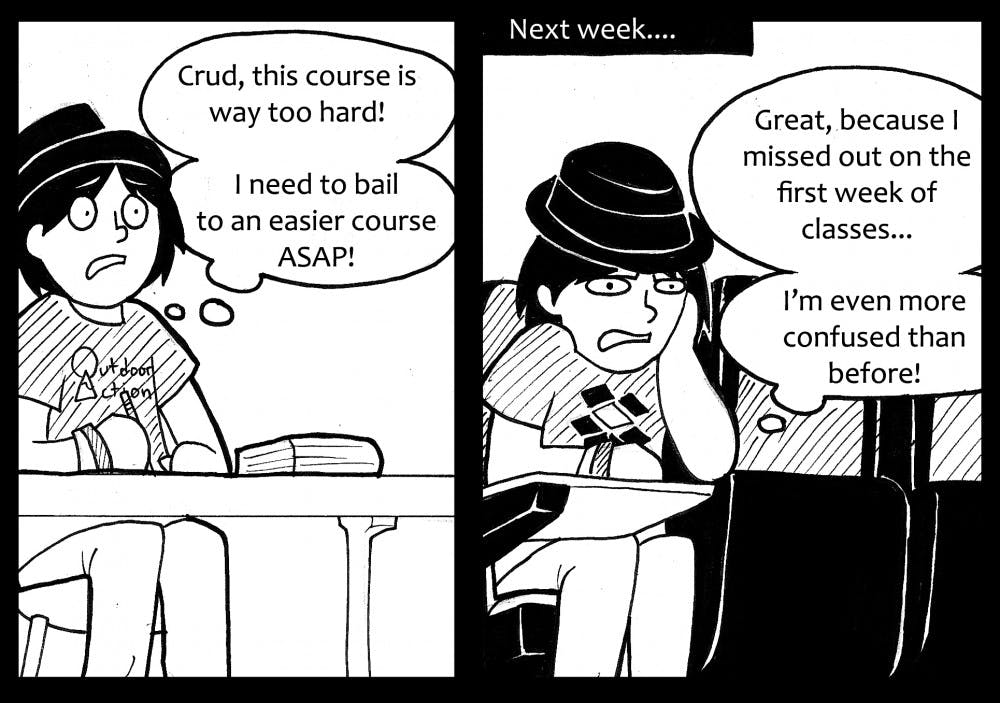Add/Drop period sounds great in theory: students have the chance to shop around for classes, so they can truly figure out what courses work best for them in terms of scheduling, workload, and subject matter. Rather than stick to the courses they chose based on a brief description and sample reading list, students have the chance to essentially try classes on for size. However, in practice, the two-week add/drop period maintains various hurdles that make it difficult for students to switch around their classes and limits the benefits to students. Add/drop should be changed so that students can truly use the policy to explore different classes and improve their schedules.
While students have free rein to switch in and out of classes as much as they like during this time, they are expected to keep up with each course’s curriculum. Should you switch into a class a week after it has begun, you may have hundreds of pages of readings to catch up on or a problem set to make up.
Understandably, teachers want to get started with their course material, so they can make the most of the semester. However, the full workload that persists throughout the add/drop period can discourage students from really trying out different classes and tweaking their course load. Faced with the challenge of catching up on up to two weeks of readings and various other assignments, students often resort to sticking with classes that are not the best fit. Other students who shop around during add/drop are inundated with work as they try to get up to speed with the rest of the class.
For the add/drop period to truly serve its purpose, the drawbacks of joining a class a few days late must be reduced. Various policy changes could promote a more productive add/drop period. One possibility would be prohibiting professors from assigning graded work during this period, so students would not feel that they are missing out on consequential assignments by joining a class a few days late. Alternatively, the University could institute a shorter add/drop period but insist that professors issue a lighter workload during that time, so students have an easier time switching between courses.
By reconfiguring the add/drop period in a way that reduces the disadvantages of actually adding and dropping different classes, students would hopefully feel encouraged to try out different classes and find ones that truly are the best fit. Under a more flexible add/drop period, students may be more likely to experiment with more challenging courses or courses on unfamiliar topics.
Designing an enriching course load rather than a merely convenient one has many subsequent benefits for students. When students take classes that they find interesting, the work is often more engaging, making them more likely to perform well. Additionally, students who are more interested in and inspired by the course material are more eager to contribute to class discussion.
University administration should change the structure of the add/drop period so students can optimize their course load and their education.
Ava Milberg is a sophomore from New York City. She can be reached at amilberg@princeton.edu.








